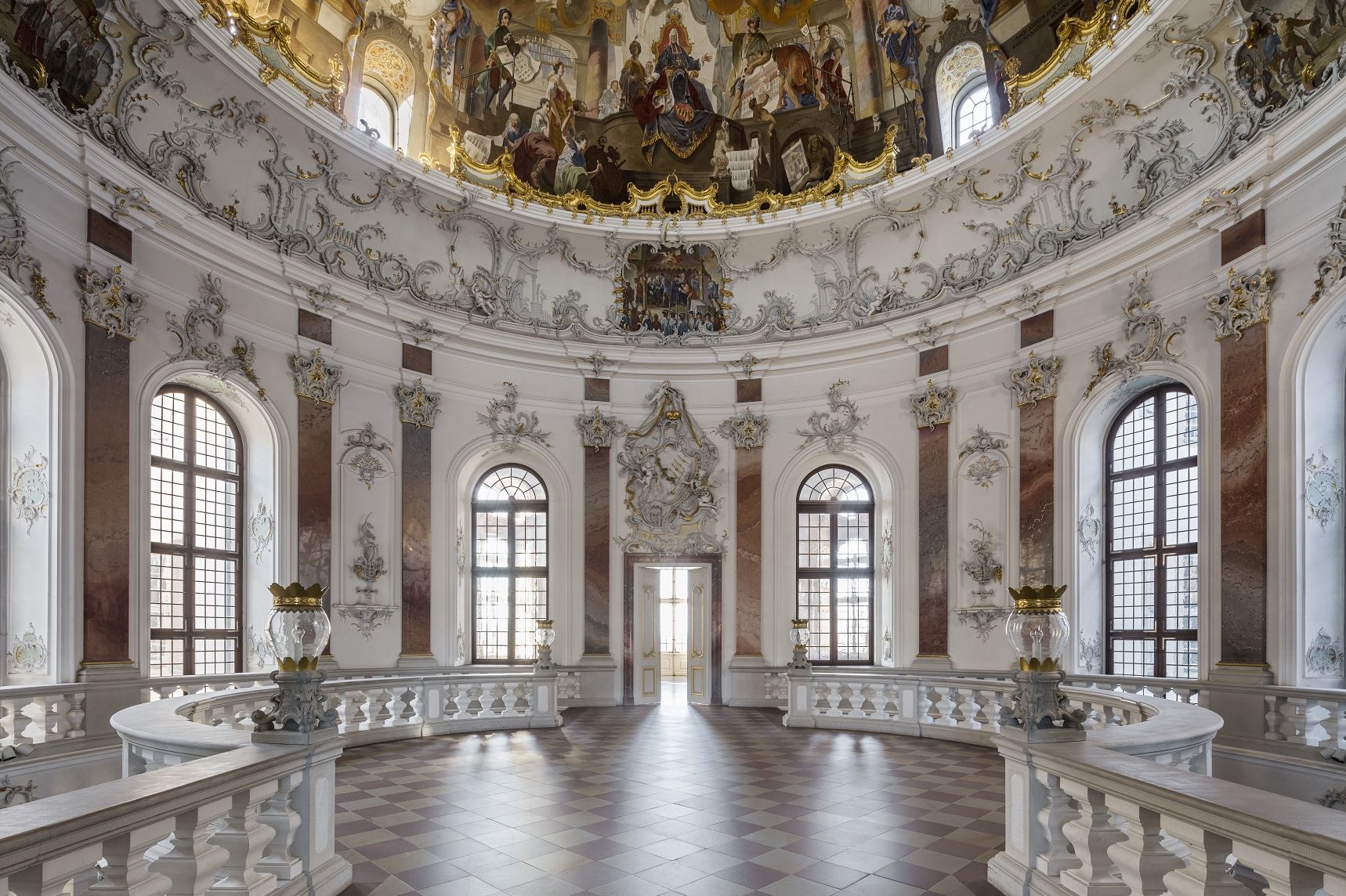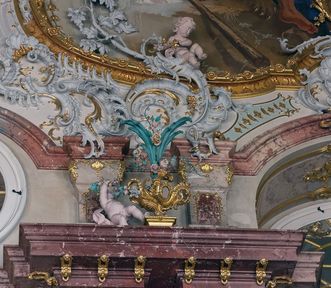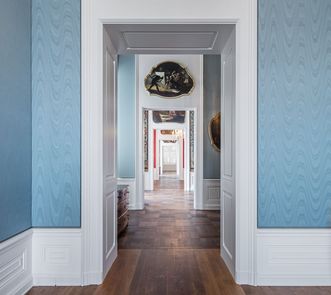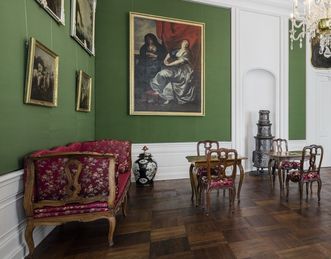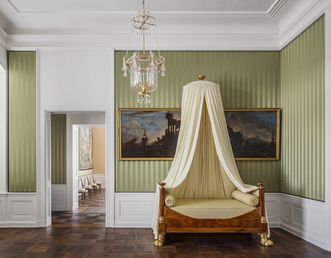The ceremonial halls
The reconstructed interior decorations of the three most important rooms of the palace were created under Prince-Bishop Franz Christoph von Hutten in the Rococo style between 1751 and 1754. The Domed Hall crowns the staircase, which leads to the two ceremonial halls of the palace. The Royal Hall is the ceremonial hall closest to the city. The Marble Hall lies in the direction of the garden. It is the architectural and programmatic center of the spiritual residence.



